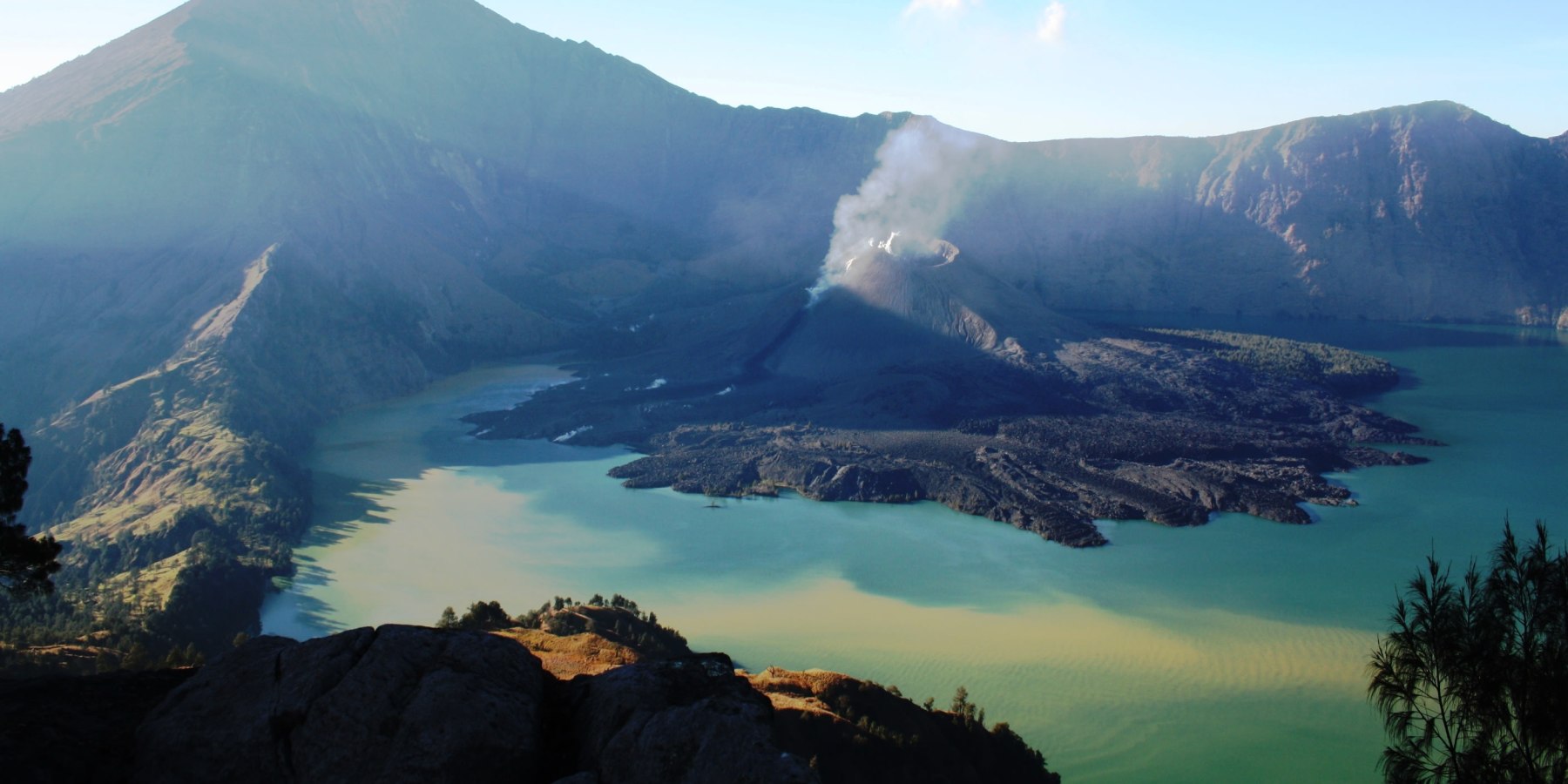
Rinjani National Park
The park covers an area of 41,330 ha on the northern part of Lombok and locates the three administrative district of West, East and Central Lombok. The area covers 12,357.67 ha in the west, 22,152.88 ha in the east and 6,819.45 ha in central Lombok. Rinjani dominates the National Park of Lombok, an island east of Bali on the Indonesian archipelago. At 3726m, it is the second-highest volcano in Indonesia, part of the infamous ring of fire that encircles the basin of the Pacific. Within the crater is the spectacular Segara Anak lake and the still-active volcano Gunung Baru (2,363m).
 It is surrounded by further 66,000 ha of Protection Forest also covers the three administrative districts. The park ecosystem is in the transitional zone between Asia and Australia (Wallace zone). The average rainfall is about 3,000mm annually.
It is surrounded by further 66,000 ha of Protection Forest also covers the three administrative districts. The park ecosystem is in the transitional zone between Asia and Australia (Wallace zone). The average rainfall is about 3,000mm annually.
Gunung Rinjani is rich in a variety of flora and fauna and vegetation types. There are 114 families and more than 500 several of floras found and about 50 species of plant that can be used for traditional medicine. While fauna in Gunung Rinjani is about 12 mammal and reptile species, more than 50 birds’ species and more 50 several of butterflies which some are protected and has a limited area of spread. On the South Western side of the mountain is the most eastern extent of primary rainforest in Nusa Tenggara. This gives way to monsoon forest and drier climate in the east, and savannah in the northeast. Notable flora includes the everlasting edelweiss flower (Anaphalis viscida), tiger orchid (Vanda sp) alang-alang grass (Imperata cylindrical), cemara tress (Casuarina trifolia and Casuarina ocidentale).
Gunung Rinjani, one of the over 50 National Parks throughout Indonesia and 21 become National Park model included Gunung Rinjani National Park, it was established in 1997. It is valued and protected for its spiritual as well as natural values, and is worshipped by thousands of Balinese as well as Sasak pilgrims. Hot springs near the Lake are sought after for their healing powers.
Over 38 villages spread out in 12 sub-districts surround Rinjani and there are many routes up to the mountain, but the main access is from Sembalun Lawang to the East. The challenging three-day Rinjani Trek route from Senaru to crater rim (Pelawangan), down to the stunning crater lake then on to Sembalun Lawang, is considered one of the best treks in South East Asia. Those heading for the summit usually prefer to start in Sembalun Lawang.
The village of Senaru is the main gateway to Mt. Rinjani National Park, the most popular start point for the three-day Rinjani Trek up Indonesia’s second-highest volcanic peak (3,762 m). For the people of Lombok, Sasak and Balinese alike, the volcano is revered as a sacred place and the abode of Gods. Within the spectacular crater, the Segara Anak Lake is a destination of many pilgrims who place offerings in nearby hot spring.
The Rinjani Trek
Over 38 villages spread out in 12 sub-districts surround Mt. Rinjani and there are many routes up the mountain, but the main access is from Senaru in the north and Sembalun Lawang to the east. The challenging three-day Rinjani Trek route from Senaru to the crater rim (Plawangan), down to the stunning Lake then on to Sembalun Lawang, is considered one of the best treks in South East Asia or the 3-day Rinjani Trek that includes the climb to the summit and usually begins in Sembalun Lawang.
What You Might See
Gunung Rinjani National Park lies within the major transition zone (Wallaceae) where the flora and fauna of South East Asia makes a dramatic transition into that which is typical of Australasia. The Park has a rich variety of plants and animals, although they can be hard to spot due to the terrain and rainforest cover.
Sometimes seen early in the mornings is the rare black Ebony leaf monkey, known locally as Lutung. The Long-tailed grey macaque or Kera is common in Lombok and older males are seen on the crater rim. Rusa deer are forest dwellers and are occasionally seen along the Rinjani trek trail. The smaller Barking deer or Kijang has an alarm call with a distinct dog-like bark. Look for the disturbed ground where the Wild pig or Babi hutan has been foraging. Also found in the forest is the Leopard cat or Bodok alas, Palm civet or Ujat and Porcupine or Landak.
A variety of colourful birds live in the forests of the Park. Perhaps the best-known icon of the Park is the Sulphur Crested Cockatoo that is not found any further west of Lombok. Many of the forest-dwelling animals, insects, birds, civets and monkeys owe their survival to the wild fig tree or Beringin as a provider of food and shelter. The pine-like Casuarina species, Cemara, are a feature of the grassy higher slopes. Orchids or Anggrek are also a feature of the grassland areas, as is Edelweiss or Bunga Abadi growing above the tree line; it is a beautiful icon of the Park and one of our best-known sub-alpine plants.

